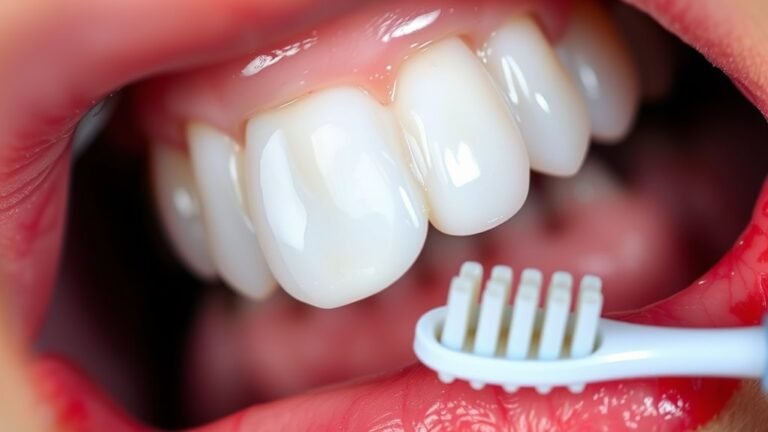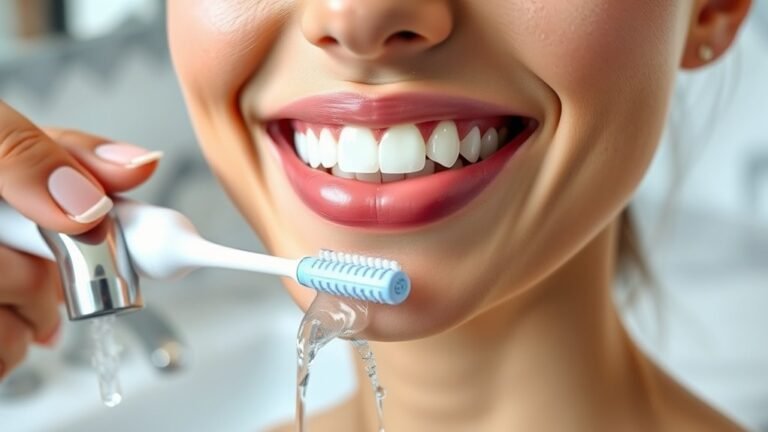How to Clean Bottom of Boat
To clean the bottom of your boat, start by rinsing it with fresh water to remove loose debris. Check for algae and stains, then apply a marine-safe cleaner to affected areas. Use a non-abrasive scrubber in circular motions, and rinse thoroughly afterward. Repeat for stubborn spots, ensuring to document any issues you find. Always wear safety gear and use biodegradable products to protect the environment. Discover more detailed tips to maintain your boat’s performance and appearance.
Preparation For Cleaning

Before you plunge into cleaning your boat, it’s essential to gather the right supplies and assess your vessel’s condition. Start by examining the hull, paying attention to any signs of wear or damage that may require more extensive boat maintenance. Next, identify the appropriate cleaning techniques for your boat’s material, whether it’s fiberglass, aluminum, or wood. Having the right tools on hand will streamline the process, ensuring you don’t interrupt your momentum. You’ll want to check for stains, algae, and salt buildup, which can affect both aesthetics and performance. By preparing adequately, you set yourself up for an efficient cleaning session that enhances your boat’s longevity and keeps your freedom on the water intact.
Tools and Chemical Required

To effectively clean your boat, you’ll need a selection of specific tools and chemicals tailored to its material and the kind of cleaning required. Here’s a basic list of essential boat cleaning supplies, including eco-friendly options for those who prioritize environmental responsibility:
| Tool/Chemical | Purpose | Eco-Friendly Options |
|---|---|---|
| Scrubber or Brush | Remove algae and grime | Biodegradable cleaners |
| Pressure Washer | Deep cleaning | Water-efficient models |
| Hull Cleaner | Stain removal | Non-toxic formulas |
Using the right combination of tools and chemicals not only enhances your cleaning efficiency but also helps maintain your boat’s integrity while being gentle on the environment. Choose wisely for the best results! It’s important to select non-abrasive cleaners to protect your boat’s surface and avoid damage during cleaning.
How to Clean:

How to Clean Your Boat: A Step-by-Step Guide
Step 1: Rinse the Boat
- Begin by rinsing your boat with fresh water. This will help remove loose debris, dirt, and salt that can cause damage if left unattended.
- Use a hose with a spray nozzle for an even distribution of water across the entire surface of the boat, including the hull, decks, and any other exposed areas.
Step 2: Inspect the Hull
- After rinsing, carefully inspect the hull for any algae, barnacles, or other growth that may have accumulated.
- Look for discolored areas or rough patches that may indicate stubborn stains or buildup.
Step 3: Apply Marine-Safe Cleaner
- Use a marine-safe cleaner that is specifically designed for hull maintenance. This ensures that you are using a product that is effective yet safe for the boat’s materials.
- Generously apply the cleaner to the affected areas, ensuring to cover all spots with stubborn stains.
- Allow the cleaner to penetrate the stains for a few minutes to loosen any buildup.
Step 4: Scrub the Surface
- Use a non-abrasive scrubber to clean the hull. Avoid using steel wool or harsh scrubbers that could scratch the surface.
- Scrub the surface in circular motions, applying gentle pressure to remove algae and stains. Make sure to cover all areas, including hard-to-reach spots.
Step 5: Rinse Thoroughly
- After scrubbing, rinse the hull thoroughly with fresh water. This step is crucial to wash away the cleaner and any loosened debris.
- Ensure that no cleaner residue remains on the surface, as it could affect the boat’s finish if left unattended.
Step 6: Repeat if Necessary
- If you encounter tough spots or stubborn stains that remain after the first cleaning, repeat the process as needed.
- Reapply the marine-safe cleaner and scrub again, focusing on the areas that require extra attention.
Step 7: Apply Protective Wax or Sealant
- Once the hull is clean and rinsed, consider applying a protective wax or sealant to enhance its longevity.
- Follow the manufacturer’s instructions for application, ensuring even coverage across the entire hull.
- This will help reduce future cleaning efforts and protect the surface from harmful elements.
Safety Consideration
While cleaning your boat is essential for maintaining its condition, safety considerations should always be a priority. First, make certain you’re wearing appropriate safety gear, such as gloves, goggles, and a wetsuit if you’re going into the water. Inspect your equipment before starting to verify everything’s in good working order. Additionally, be mindful of the environmental impact of the cleaning products you use; opt for biodegradable options whenever possible. Proper disposal of waste materials is also vital to avoid contaminating water bodies. If you’re using a ladder or working at heights, secure it properly to prevent falls. By prioritizing safety, you’ll not only protect yourself but also preserve the natural beauty of the waterways you love.
Frequently Asked Questions
How Often Should I Clean the Bottom of My Boat?
You should clean the bottom of your boat every month, especially if it’s frequently in the water. Notably, studies show that boats with clean hulls can be 10-15% more fuel-efficient. Incorporating a maintenance schedule that includes regular inspections and cleaning not only enhances performance but also prolongs the life of your vessel. If you want to enjoy smooth sailing and freedom on the water, keeping the bottom clean is essential.
Can I Use Vinegar Instead of Chemicals for Cleaning?
Yes, you can use vinegar as a cleaning alternative. Vinegar benefits include being non-toxic and biodegradable, making it safer for both you and the environment. It effectively breaks down grime and algae without harsh chemicals. Just mix equal parts vinegar and water, apply it to the surface, and scrub with a soft brush. Rinsing thoroughly afterwards will help you maintain a clean boat while enjoying the freedom of using eco-friendly products.
What Is the Best Time of Year for Cleaning?
The best time for cleaning your boat’s bottom is during spring cleaning, as this marks the changeover from winter storage to active use. Spring cleaning allows you to perform essential seasonal maintenance, ensuring your boat’s hull is free from algae and debris that accumulated during the colder months. By tackling this task early, you’ll enhance performance and prolong the lifespan of your vessel, giving you the freedom to enjoy hassle-free outings throughout the boating season.
Are There Eco-Friendly Cleaning Options Available?
Yes, there are eco-friendly cleaning options available for your boat. Biodegradable cleaners are a great choice, as they break down naturally and won’t harm marine life. Look for natural alternatives like vinegar or baking soda, which are effective and safe. These options not only protect the environment but also guarantee you’re maintaining your boat responsibly. Using these products allows you to enjoy your time on the water without worrying about the impact on nature.
How Do I Prevent Algae Growth After Cleaning?
To prevent algae growth after cleaning, you’ll want to apply a quality antifouling paint designed for your boat’s hull. These products create a protective barrier, deterring algae and other marine organisms. Regular inspections and cleaning are essential, too; even the best cleaning products can’t eliminate algae entirely if you neglect maintenance. Using biocide-free options can also help maintain eco-friendliness while ensuring your vessel stays clean and ready for adventure on the water.






